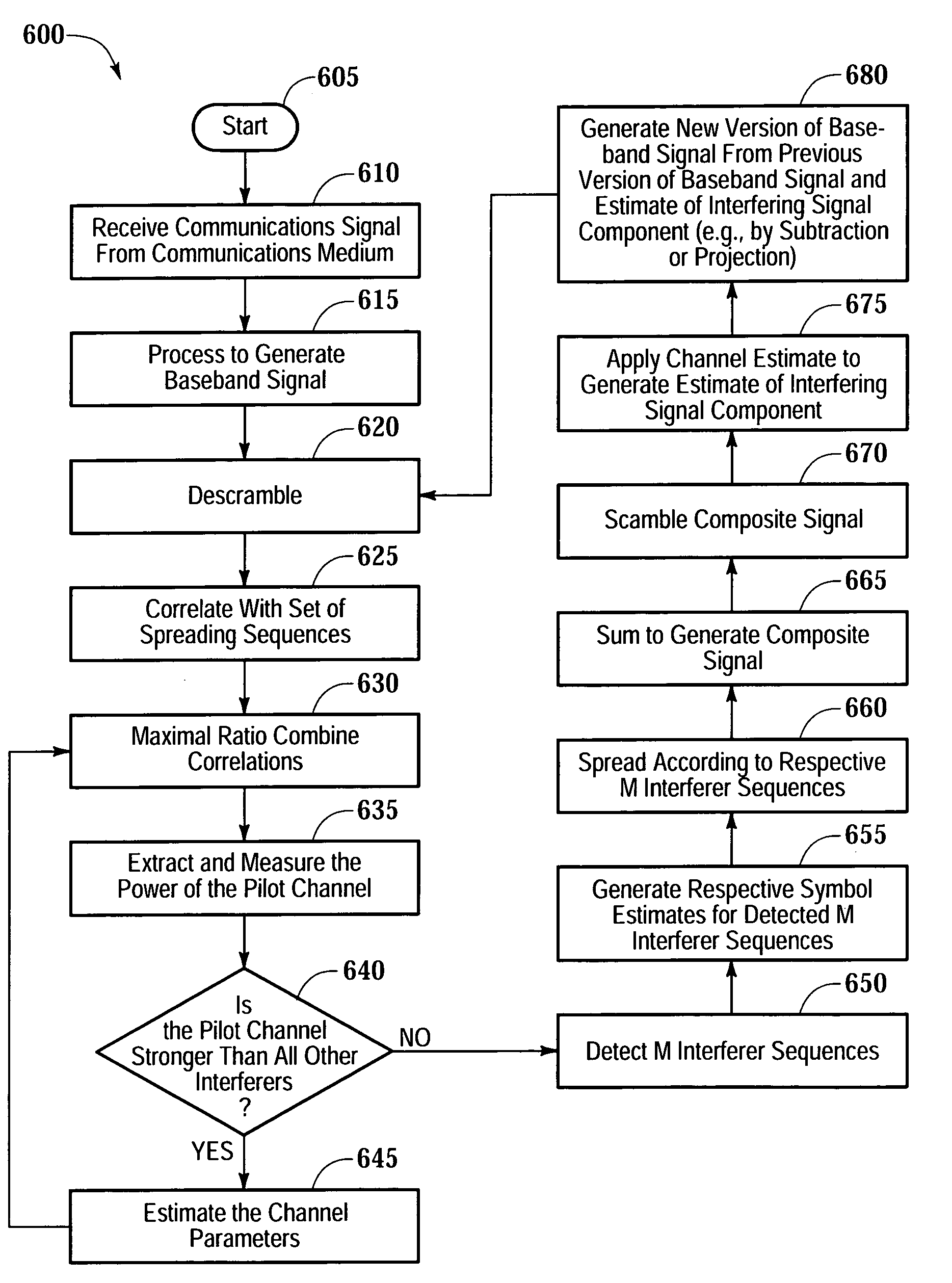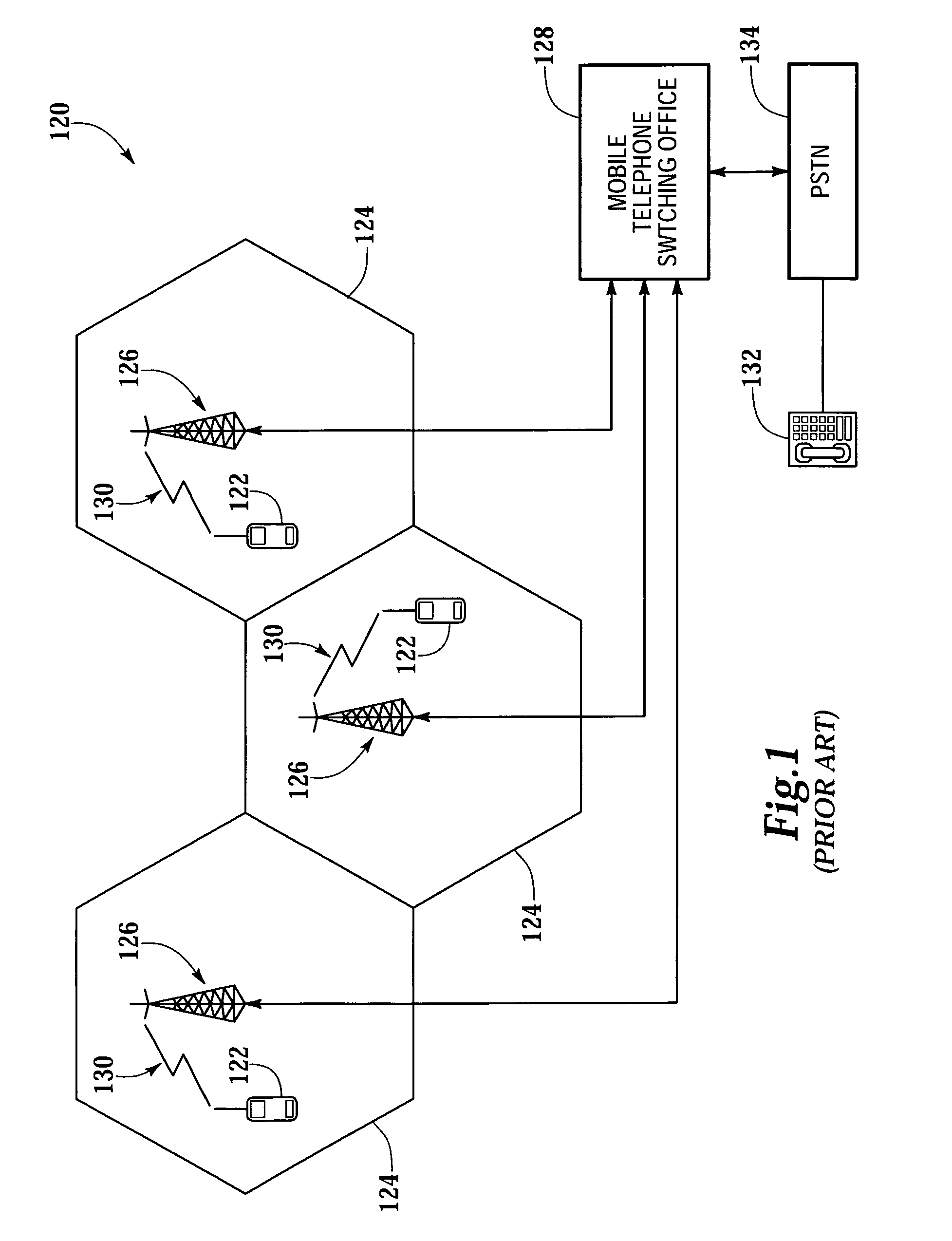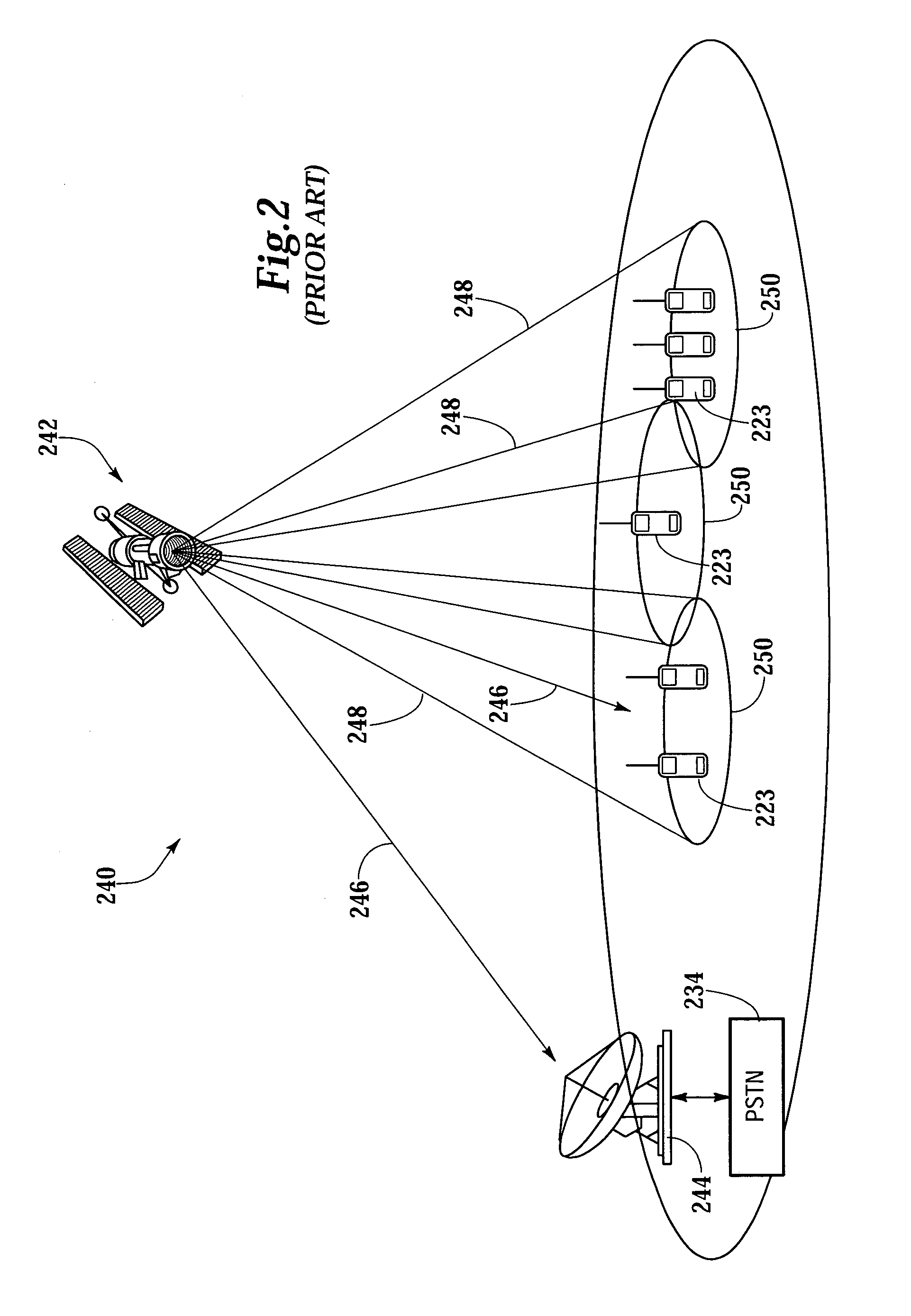System, method and apparatus for wireless channel parameter estimation in spread spectrum communication systems
a technology of wireless channel and wireless channel parameter, applied in the field of telecommunications, can solve the problems of poor channel estimation, interference can be intensified, receiver performance degradation, etc., and achieve the effect of accurate estimation of channel parameters
- Summary
- Abstract
- Description
- Claims
- Application Information
AI Technical Summary
Benefits of technology
Problems solved by technology
Method used
Image
Examples
first embodiment
[0040]FIG. 5 illustrates the present invention, like numbers denote like elements. A base station communications signal is received and processed in block 505. In block 510, a fast Walsh transformation (FWT) is performed to detect the spreading codes. The FWT is performed for each finger of the receiver. The fingers' delays are assumed to be known. The fingers are combined in the maximum ratio combiner (MRC) in block 515. If the common pilot channel is not the strongest signal, then an attempt is made to suppress the interferers. The maximum M values (interferers) are selected, decoded and then coded in block 525. The results from block 525 are then spread according to the respective M interferer sequences in block 530. An estimated version of the channel is generated in block 535. This estimated version is fedback to block 505. The entire system repeats itself until the common pilot signal is the strongest. Once the common pilot signal is determined to be the strongest, channel est...
second embodiment
[0045]FIG. 7 illustrates the present invention. An initial channel estimation is made from the common pilot channel in block 720. Each finger of the receiver is Fast Walsch Transformed (FWT) in block 710, again assuming that the finger delays are known. A finger channel estimation is made in block 725. The fingers are combined by the maximum ratio combiner (MRC) in block 715. The MRC has been initially set according to the estimation parameters from the common pilot channel. If the common pilot channel is determined to be stronger than the interfering signals in block 735, then the previously estimated parameters are used in the demodulation process in block 760. Otherwise, the maximum M values are selected, decoded and coded in block 745. Channel estimations are made on the results of block 745. The channel estimations are all weight-averaged in block 750 to get the optimum channel estimate. This is then feedback to the MRC in block 715.
[0046]FIG. 8 illustrates operation 800 of a s...
PUM
 Login to View More
Login to View More Abstract
Description
Claims
Application Information
 Login to View More
Login to View More - R&D
- Intellectual Property
- Life Sciences
- Materials
- Tech Scout
- Unparalleled Data Quality
- Higher Quality Content
- 60% Fewer Hallucinations
Browse by: Latest US Patents, China's latest patents, Technical Efficacy Thesaurus, Application Domain, Technology Topic, Popular Technical Reports.
© 2025 PatSnap. All rights reserved.Legal|Privacy policy|Modern Slavery Act Transparency Statement|Sitemap|About US| Contact US: help@patsnap.com



